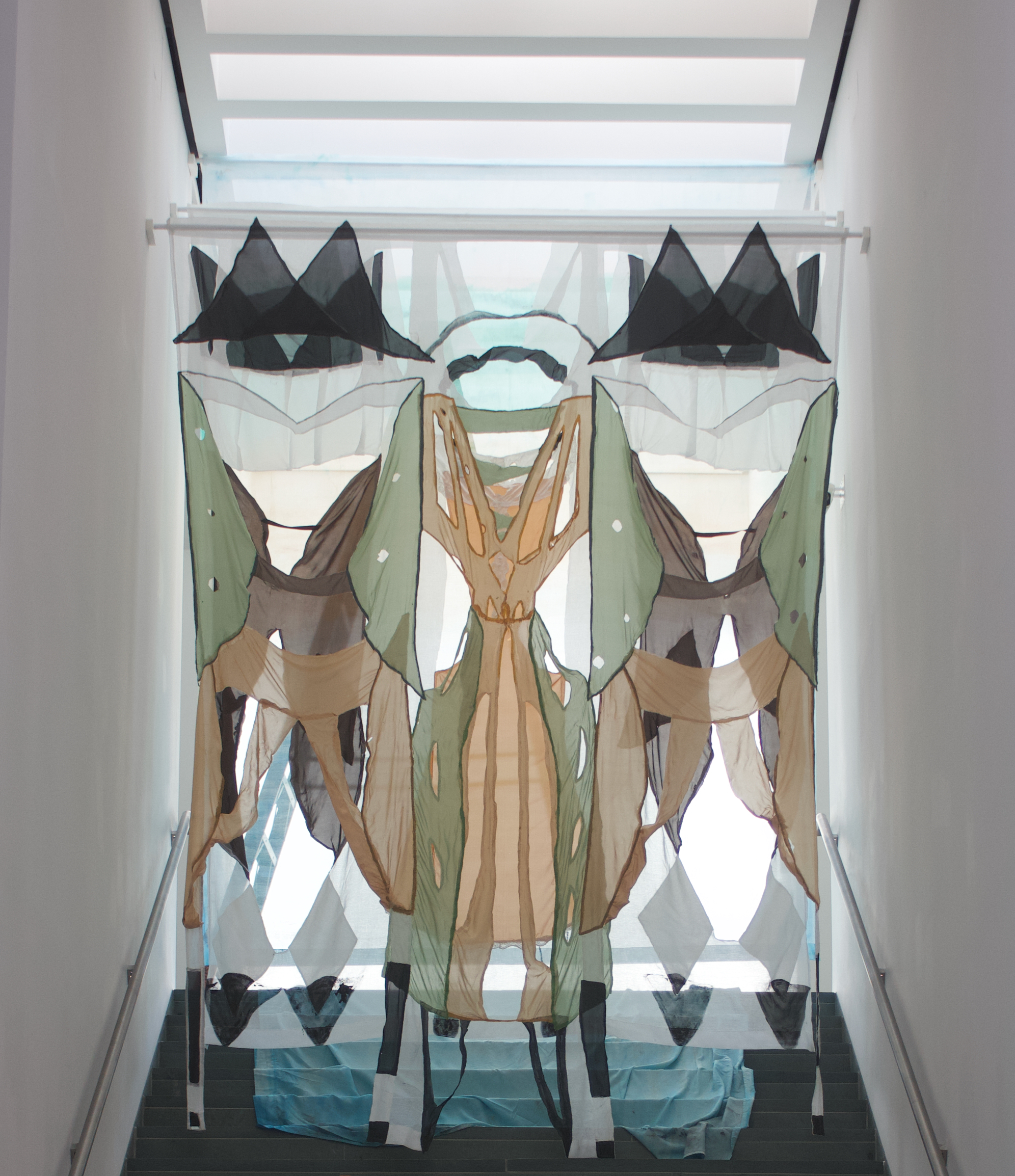
Rear view
Rear View by Dorothea Osborn as part of the Many America’s exhibition.
HISTORY
Among the popular mythologies that speak to the founding of America is the story of the Pilgrims. The stories go, these people from England, in pursuit of religious autonomy heroically crossed the ocean and built a new civilization rooted in freedom and democracy. For this, these settlers were rewarded with the wealth of the nation. This story is perpetuated by hereditary organizations like the Massachusetts-based Winthrop Society, whose members “consist of proven descendants of the first settlers of the Massachusetts Bay Colony. It is open to all men and women of good character and proven descent from one or more passengers of the Winthrop fleet, or of others who settled in the Bay Colony and Down East by the end of
1640.” The story of the Pilgrims is taught in textbooks to school children, a frequent
subject of children’s books, and appears in popular portrayals of the nation’s founding in art and other media.
In reality, the colonies established by these early settlers were difficult places that
emphasized economic output and social conformity. They established a system of
whiteness that, according to historian Nell Irvin Painter, linked concepts of labor, gender, economic class, and images of personal beauty to a social caste whose political, economic, and social interests were prioritized above all others.
Throughout the nation’s history, the definition of American whiteness would be redefined to suit the needs of those considered white.
ARTWORK
Dorothea Osborn explored the history of whiteness in her own family going back to her first paternal settler in 1637. Each of the panels in Osborn’s fabric installation, Rear View, represents a different generation of the artist’s family. Panels are made of fabrics that point to the styles, materials, and color of their time. Viewed as abstract fragments of fabric and color, together they come to represent a complicated family history. The artist thanks the Puffin Foundation for its support of the project. In addition, she is grateful to her studio assistant Anna Pellicone for countless hours assisting with this installation.
On the Exhibition’s Companion website, learn more about the early colonies and read a deeper commentary on Dorothea Osborn’s installation.
